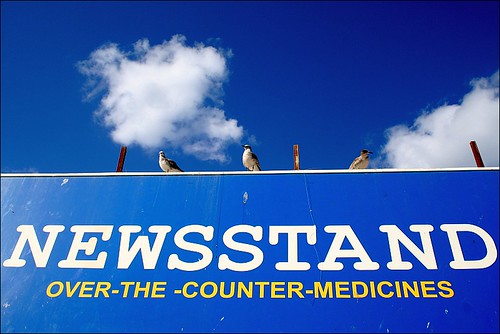Last month Health.com took a look at whether Twitter and Facebook could help in the fight against breast cancer in an article by Sally Chew and Heather Mayer. Chew and Mayer reported in the beginning of their article, “Twitter and other social media sites are often perceived as the ultimate navel-gazing tools. Seemingly a narcissist’s dream, many think that Facebook status updates and the 140-character Twitter messages (known as “tweets”) are really just boring play-by-plays of daily life—I had granola for breakfast! I’m stuck in traffic!”
The reporters described how Laurie Brosius, 31, a business analyst in Dallas, raised $6000 through Twitter for a walk for breast cancer to honor her husband’s deceased mother. Brosius raised 50 percent of the money through strangers that found her original tweet through the power of re tweets, people sending out her original tweet requests to their followers.

![]() photo credit: Steve Beger Photography (Beger.com Productions)
photo credit: Steve Beger Photography (Beger.com Productions)
In their article “Can Twitter and Facebook Help Fight Breast Cancer?” Chew and Mayer write:
In a busy world, Twitter posts are succinct and to the point, and that’s one of the main reasons they’re so successful in charity promotion, says Adam Hirsch, the chief operations officer of Mashable.com, a social media blog. Navigating websites can be time-consuming, notes Hirsch. Twitter, however, states a user’s case in no more than 140 characters. “It’s a message you know people will read because, face it, it’s only 140 characters,” he says.
With Twitter, users can interact one-on-one, but they can also broadcast a message to many followers. Even if an individual doesn’t have a lot of followers (say, just family and friends), those people can re-tweet that message in outgoing concentric circles of social contacts—potentially reaching thousands.
In the article, Chew and Mayer also write about breast cancer survivor Sharon Adams who took on Facebook after the social media company took down photos Adams had posted “of her ropy red mastectomy scars” in the hope of shocking her friends in England into “checking their own breasts for cancer.”
What ensued was an avalanche of media attention and a 3,000 Facebook member protest. Facebook eventually relented and allowed her pictures to be posted. Adams saw the whole controversy over her photos as a benefit. More people became aware of her story and the need to do breast exams than would have if Facebook had not removed her pictures.
You can read the entire article here.
Have you used any social media sites to raise awareness for a cause that you believe in?




